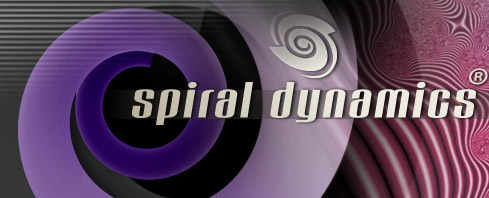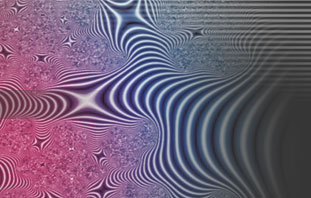 |
 |
|||||||
 |
||||||||
|
About Spiral Dynamics > Spiral Dynamics and Memetics:
vMemes and memes As Dawkins conceives of them, memes reproduce themselves; they interact with their surroundings and adapt to them; they mutate; they persist; and they defend themselves against each other. Memes evolve to fill the empty niches in their local environments, which are, in this case, the surrounding belief systems and cultures of their natural hosts, namely, us. Memes are transmitted in conversation, via the mass media, in literature, religion and politics. They take the form of simple concepts and complicated social movements. The Internet is a meme transmitter on a grand scale; the entertainment industry is another. Intriguing as they are, memes are subject to a still deeper set of organizing principles which attract and repel them. Memes float in the flow of evolving human consciousness—and there’s a broader pattern to the currents and eddies in this stream of conceptions and ideas. One tool for mapping that pattern is Spiral Dynamics. In the book, Spiral Dynamics: Mastering Values, Leadership, and Change, the authors, Chris Cowan and Don Beck, coined the term vMEME to help make sense of the migration of memes and their cultural impact. The vMEME concept is an effort to show the connection between the ideas carried in memes and the underlying value systems (thus, the v), thinking structures, worldviews, coping strategies, or Gravesian levels of psychological existence. Cowan and Beck created the term because the then-popular label, "value system," is so easily confused with values as contents—the beliefs and ethical frames that set priorities and express moralities. Values are formed and shaped by the thinking in underlying value systems (valuing systems is better). vMeme was an effort to bypass that confusion. The systems along "the spiral" can be thought of as vMEMEs—value-system or meme attractors—that frame life priorities, worldviews and vistas, and form the context for the individual memes that arise and circulate within them. These awakening vMEMEs establish the shape of deep mindsets and worldviews to which memes attach, or from which they are repelled. They are the scaffolding on which the constructs of the mind are built, the Velcro®-like hooks to which the loops of memes attach and bond. We stand on our platforms of vMEMEs to observe the world and report the "reality" as we see it. Advertisers shoot memes at us, hoping they will be sticky and hold our attention. An understanding of the deep vMEMEs helps explain why some memes that arise "take" and others drift into oblivion. A meme that does not fit the active vMEME is often ignored, sometimes fought like an invader. When a meme does fit the active vMEME, it becomes part of the memetic package and endures. It can even influence the milieu enough to cause a shift in the underlying vMEME as part of the spiral process to more complex and elaborated conceptions of being. The meme’s lifespan is a function of its own power and the forces at work in the vMEME. At this level, the vMEME model offers the memetic discussion something really quite new to think about. Just note that memes and vMEMEs are not at all the same thing, though many people seem unable to differentiate the two constructs, a confusion which diminishes both. Indeed, some of the ideas and terminology from the Spiral Dynamics book such as the color code have been turned into memes, themselves. See Spiral Dynamics > FAQs > Memetics for more. |
About SD | SD in Action | About NVC Consulting | Training | Resources | FAQs | Newsletter